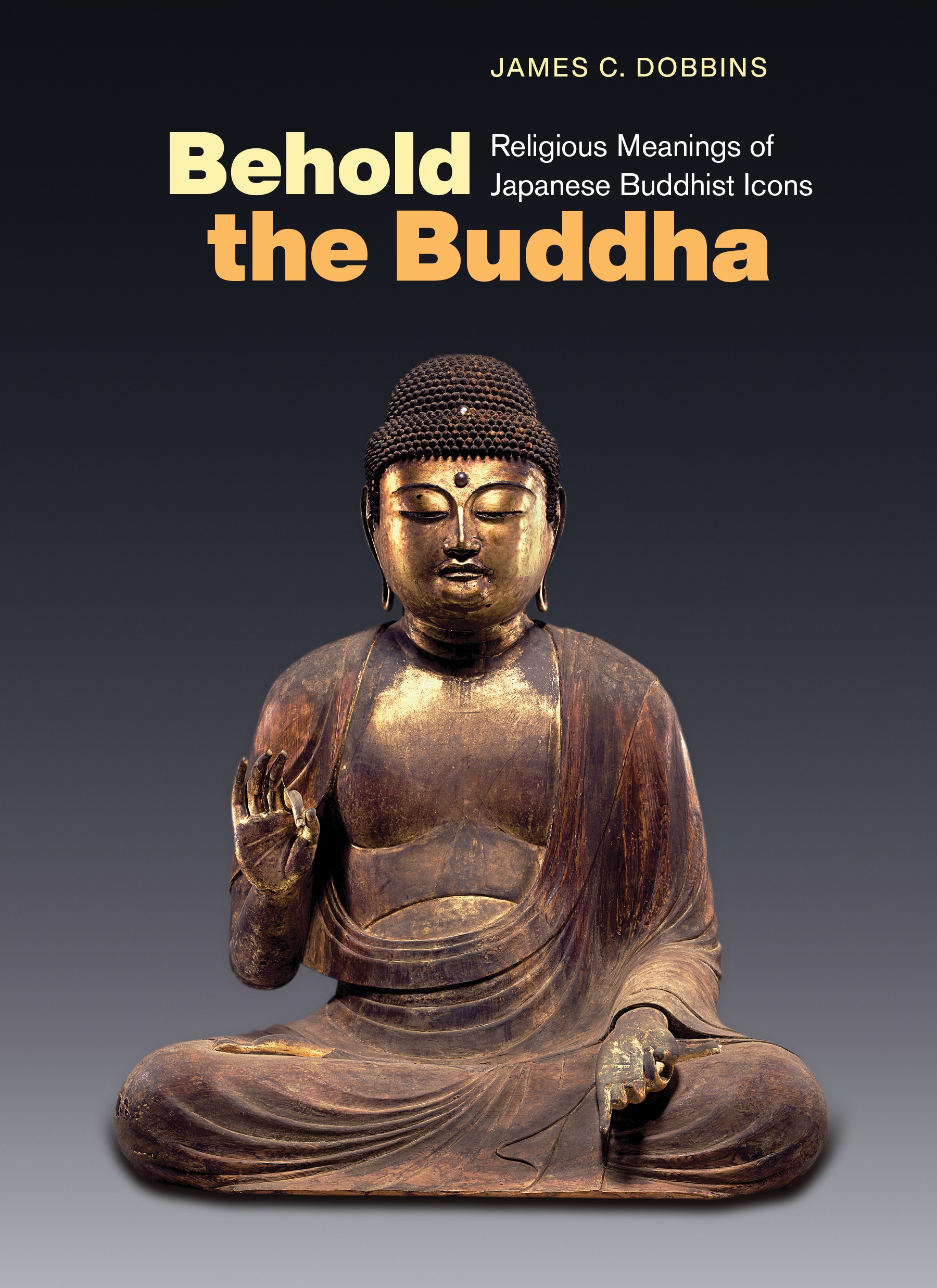Behold the Buddha: Religious Meanings of Japanese Buddhist Icons
- About the Book
-
Images of the Buddha are everywhere—not just in temples but also in museums and homes and online—but what these images mean largely depends on the background and circumstance of those viewing them. In Behold the Buddha, James Dobbins invites readers to imagine how premodern Japanese Buddhists understood and experienced icons in temple settings long before the advent of museums and the internet. Although widely portrayed in the last century as visual emblems of great religious truths or as exquisite works of Asian art, Buddhist images were traditionally treated as the very embodiment of the Buddha, his palpable presence among people. Hence, Buddhists approached them as living entities in their own right—that is, as awakened icons with whom they could interact religiously.
Dobbins begins by reflecting on art museums, where many non-Buddhists first encounter images of the Buddha, before outlining the complex Western response to them in previous centuries. He next elucidates images as visual representations of the story of the Buddha’s life followed by an overview of the physical attributes and symbolic gestures found in Buddhist iconography. A variety of Buddhas, Bodhisattvas, and other divinities commonly depicted in Japanese Buddhism is introduced, and their “living” quality discussed in the context of traditional temples and Buddhist rituals. Finally, other religious objects in Japanese Buddhism—relics, scriptures, inscriptions, portraits of masters, and sacred sites—are explained using the Buddhist icon as a model. Dobbins concludes by contemplating art museums further as potential sites for discerning the religious character of Buddhist images.
Those interested in Buddhism generally who would like to learn more about its rich iconography—whether encountered in temples or museums—will find much in this concise, well-illustrated volume to help them “behold the Buddha.”
- About the Author(s)
-
James C. Dobbins, Author
James C. Dobbins is Fairchild Professor Emeritus of Religion and East Asian Studies at Oberlin College.
- Reviews and Endorsements
-
- Behold the Buddha is a marvel of elucidation and an invitation to discovery. Part introduction to Buddhism in Japan, handbook of Buddhist visual forms, and guide to premodern understandings of sacred images, it is also a reflection on how we see these revered objects today. Its focus is on Buddhist icons as salvific presences—not mere artworks—engaged by communities with scripture, ritual, and narrative and made efficacious through iconography, materiality, and aesthetic technique. With admirable clarity, it introduces us to the constellation of doctrinal concepts, devotional practices, cults, and teachers that animated such icons. Exploring images in Buddhist temples and modern museums, the author invites us to consider how such spaces have contributed to the evolving, not entirely reconcilable, meanings of Buddhist icons and art. Eminently accessible, critically informed, and vividly illustrated, Behold the Buddha will energize classroom discussions on Japanese Buddhism and Buddhist art and enable museum and temple visitors alike to look closely and come away with richer understandings of Buddhism and its sacred images.
—Gregory P. A. Levine, University of California, Berkeley - Behold the Buddha is an excellent handbook of religious imagery and icons for students, museumgoers, and travelers interested in exploring Japanese Buddhism in some detail. The work takes readers on a virtual pilgrimage of Japan's Buddhas and Bodhisattvas; Buddhist masters, relics, and calligraphy—all presented in their proper historical, philosophical, and ritual contexts—allowing them to decode the complex ways to behold these images as art, as symbols of Buddhist teachings and events, and as living entities deserving of worship.
—Asuka Sango, Carleton College
- Behold the Buddha is a marvel of elucidation and an invitation to discovery. Part introduction to Buddhism in Japan, handbook of Buddhist visual forms, and guide to premodern understandings of sacred images, it is also a reflection on how we see these revered objects today. Its focus is on Buddhist icons as salvific presences—not mere artworks—engaged by communities with scripture, ritual, and narrative and made efficacious through iconography, materiality, and aesthetic technique. With admirable clarity, it introduces us to the constellation of doctrinal concepts, devotional practices, cults, and teachers that animated such icons. Exploring images in Buddhist temples and modern museums, the author invites us to consider how such spaces have contributed to the evolving, not entirely reconcilable, meanings of Buddhist icons and art. Eminently accessible, critically informed, and vividly illustrated, Behold the Buddha will energize classroom discussions on Japanese Buddhism and Buddhist art and enable museum and temple visitors alike to look closely and come away with richer understandings of Buddhism and its sacred images.
- Supporting Resources
-





